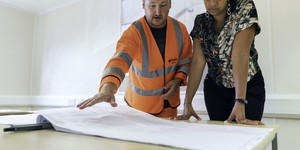Summary
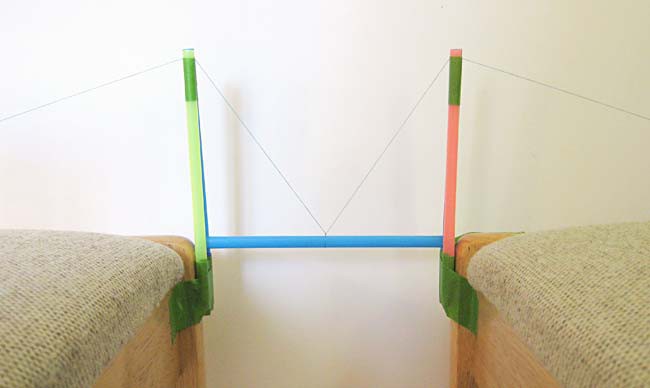
Introduction
Have you ever ridden in a car driving across a suspension bridge? Suspension bridges, with their tall towers, long spans and gracefully curving cables, are beautiful examples of the work of civil engineers. How do the cables and towers carry the load that is on the bridge, which includes you and the car you are in when you cross the bridge? Can a suspension bridge carry a greater load than a simple beam bridge? You can try to answer these questions in this science activity!Materials
- Drinking straws (7)
- Paper cup, at least 8-oz.
- Masking tape or painter's tape
- Thread
- Scissors
- Paper clips (4). At least two should be large ones.
- Many coins, all of the same type. For example, you should have at least 325 pennies, or at least 150 quarters.
- Chairs, tables, or desks that you can arrange to build a bridge between (2)
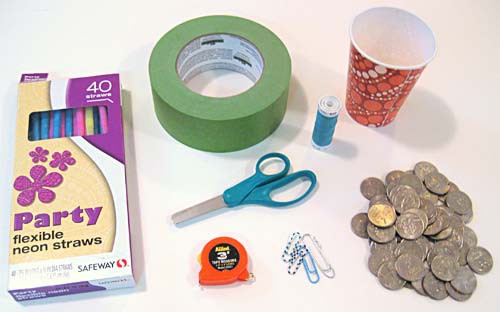 Image Credit: Teisha Rowland, Science Buddies / Science Buddies
Image Credit: Teisha Rowland, Science Buddies / Science Buddies
Instructions
- If your straws are the flexible type, cut the flexible part off (so that you are left with a long, straight, non-bendable straw piece). Cut a total of six straws this way. Make sure they are all the same length; trim some if necessary.
 Image Credit: Teisha Rowland, Science Buddies / Science Buddies
Image Credit: Teisha Rowland, Science Buddies / Science Buddies
- Cut a seventh straw to make two short pieces of straw, each about one inch long. Make sure they are both the same length.
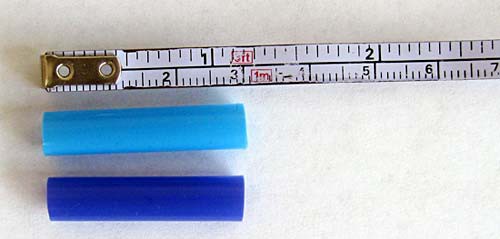 Image Credit: Teisha Rowland, Science Buddies / Science Buddies
Image Credit: Teisha Rowland, Science Buddies / Science Buddies
- Tape two long straws on either side of one of the short pieces of straw. Do this at one end of the two long straws. (If you are using flexible straws, the "long" straws will be the ones you just cut the flexible parts off of. If you are using non-flexible straws, use uncut straws for the long straws.)
- Then, tape the long straws together at the other end. You should end up with an elongated triangle shape. This is a tower for your suspension bridge.
 Image Credit: Teisha Rowland, Science Buddies / Science Buddies
Image Credit: Teisha Rowland, Science Buddies / Science Buddies
- Repeat this process with two new long straws and the other short straw piece to build a second tower.
- Tape one tower to the edge of a desk, table, or chair. The short straw piece should be at the bottom of the tower (and the end without a short piece should be at the top). Tape the second tower to a second piece of furniture at the same height. Position the towers far enough apart so that you could fit a straw between them.
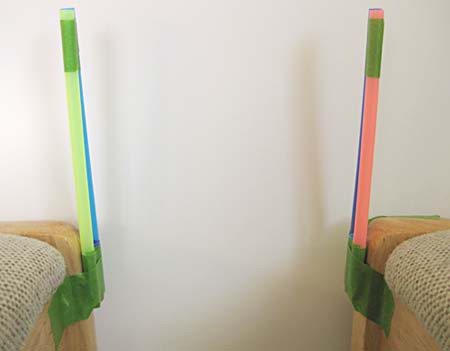 Image Credit: Teisha Rowland, Science Buddies / Science Buddies
Image Credit: Teisha Rowland, Science Buddies / Science Buddies
- Place a long straw between the towers so that its ends rest on the short pieces. This straw is the bridge deck. You now have a simple beam bridge.Can you see how this is a beam bridge? How do you think it would be different from a suspension bridge?
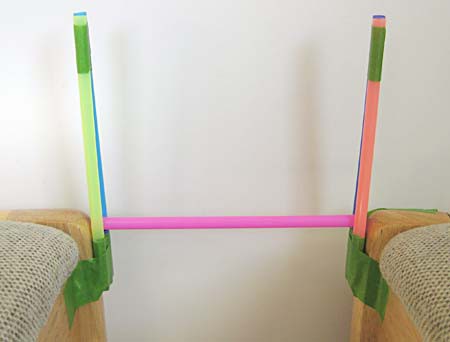 Image Credit: Teisha Rowland, Science Buddies / Science Buddies
Image Credit: Teisha Rowland, Science Buddies / Science Buddies
- Make a load tester for your bridge by unbending a large paperclip into a V-shape. Poke the ends of the paperclip into opposite sides of a paper cup, just below the thick rim at the top.
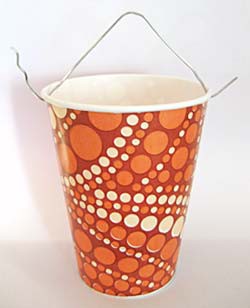 Image Credit: Teisha Rowland, Science Buddies / Science Buddies
Image Credit: Teisha Rowland, Science Buddies / Science Buddies
- Use a second large paperclip to hang the load tester over the bridge deck. Do this by attaching the two large paperclips together, and then sliding the new one around the bridge deck straw. Slide the cup to the middle of the straw.
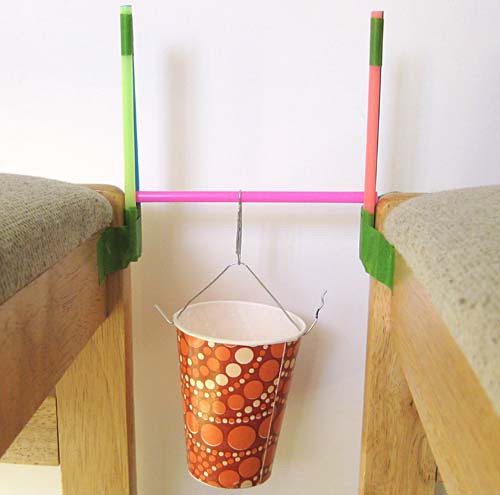 Image Credit: Teisha Rowland, Science Buddies / Science Buddies
Image Credit: Teisha Rowland, Science Buddies / Science Buddies
- Add coins (all of the same type) one at a time into the load tester.How many coins does the cup hold before the bridge fails? How does the bridge fail?
- Now start changing the beam bridge into a suspension bridge. Cut a piece of thread that is about three feet long. Tie the center of the piece of thread (which is acting as your bridge cable) around the middle of a new bridge deck straw (a new, long straw). Place the straw between the towers as before.
- Pass each end of the thread (i.e., cable) over a tower and down the other side. To anchor the suspension bridge, tie each end of the cable around a paperclip. Slide the paperclips away from the towers until the cable pulls tight. Then tape the paperclips firmly to the furniture.
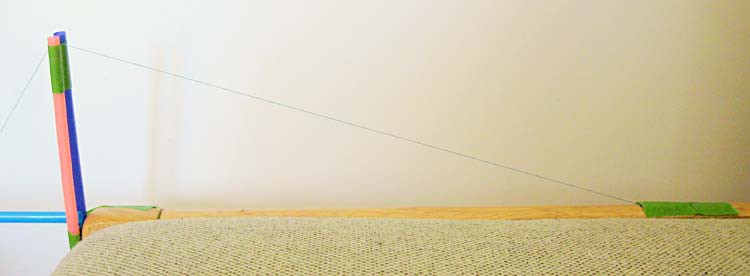 Image Credit: Teisha Rowland, Science Buddies / Science Buddies
Image Credit: Teisha Rowland, Science Buddies / Science Buddies
- Attach the load tester as you did before. Again add coins (all of the same type as before) to the cup, one at a time.How many coins does the cup hold before the bridge fails this time? How does the bridge fail?
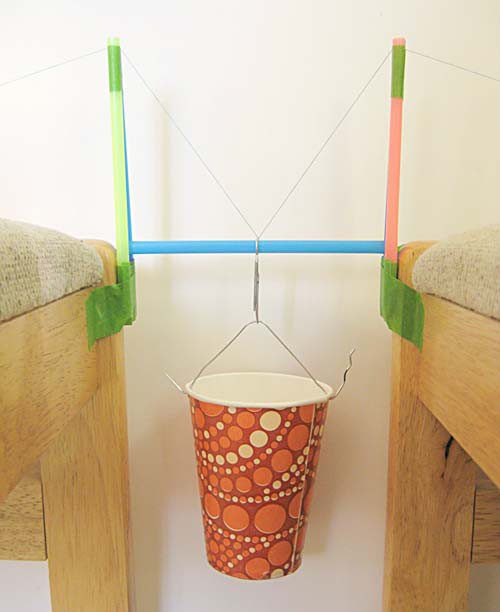 Image Credit: Teisha Rowland, Science Buddies / Science Buddies
Image Credit: Teisha Rowland, Science Buddies / Science Buddies
- Overall, which bridge design is stronger? Is it a little stronger, or a lot stronger?Why do you think you got the results that you did?
What Happened?
Did the suspension bridge hold a greater number of coins compared to the beam bridge?
In this activity you should have seen that the suspension bridge was able to hold more coins than the beam bridge by around 150%, such as about 310 pennies (or 140 quarters) compared to about 200 pennies (or 90 quarters). When the beam bridge failed, this was likely because the bridge deck straw bent downward as more coins were added until it bent so much that it slipped down between the two towers. As coins were added to the suspension bridge, the cable (i.e., thread) was under tension and reinforced the bridge deck straw, pulling it upwards (while compressing the towers) and allowing the bridge to hold more coins. When the suspension bridge eventually failed, the bridge deck straw likely similarly bent into a V-shape, but because it was attached by the thread, the straw could not fall and instead the cup may have slipped off of the straw.
Digging Deeper
In a suspension bridge, the bridge deck (the part of the bridge that supports the load, such as cars and their passengers) hangs from, or is suspended by, massive cables. These cables stretch between the bridge's towers and are securely anchored at each end. The cables are thus under tension while the bridge towers are under compression.
For long spans, the suspension bridge is usually the most economical choice because the amount of material required per unit length is less than for other bridge types. However, since suspension bridges are relatively flexible structures, stress forces introduced by high winds can be a serious problem. The dramatic collapse of the Tacoma Narrows Bridge (in Washington in 1940) is an infamous example of this.
In this activity, you build and test two types of bridges: a simple suspension bridge and a beam bridge. A beam bridge is the simplest type of bridge, and is typically supported by a raised part on either end. For example, a beam bridge could be as simple as a wood plank put down to cross a stream.
Ask an Expert
For Further Exploration
- Test each bridge design a few more times, using a new bridge deck straw each time. Are your results always the same?
- Try eliminating the portion of the cable from the towers to the anchorage (leaving only the portion of the cable from the bridge deck to the towers). What happens when you test your bridge now? Why?
- Try this activity a few more times and focus on what part (or parts) of the bridge fails first. Was the failure due to weakness of materials used or weakness at a joint? Can you think of ways to redesign your bridge to make the part (or parts) that failed stronger?
Related Resources
Project Ideas
Links
- Blog Post: Student Science: Straw Suspension Bridge
- Blog Post: Building Bridges




